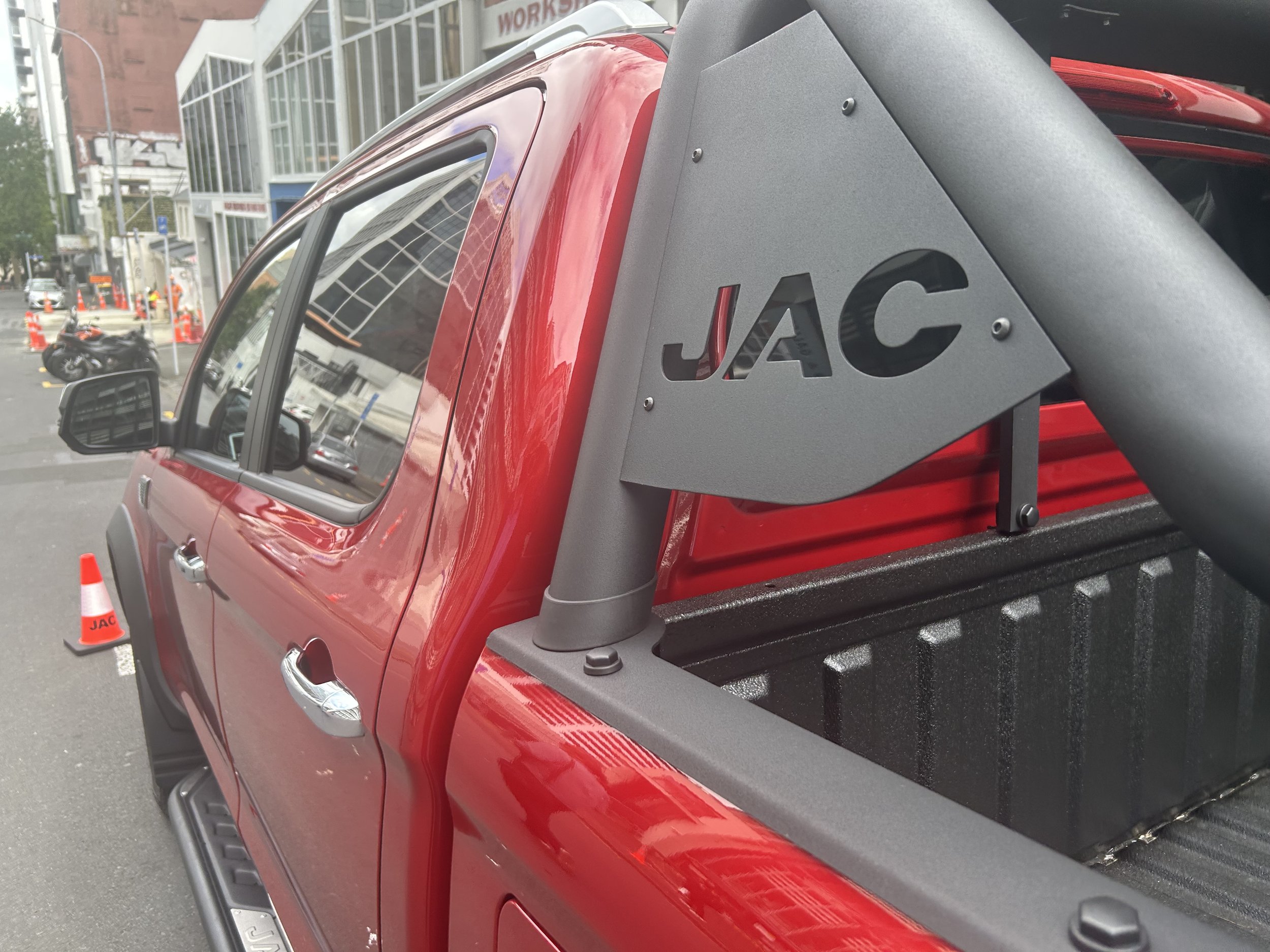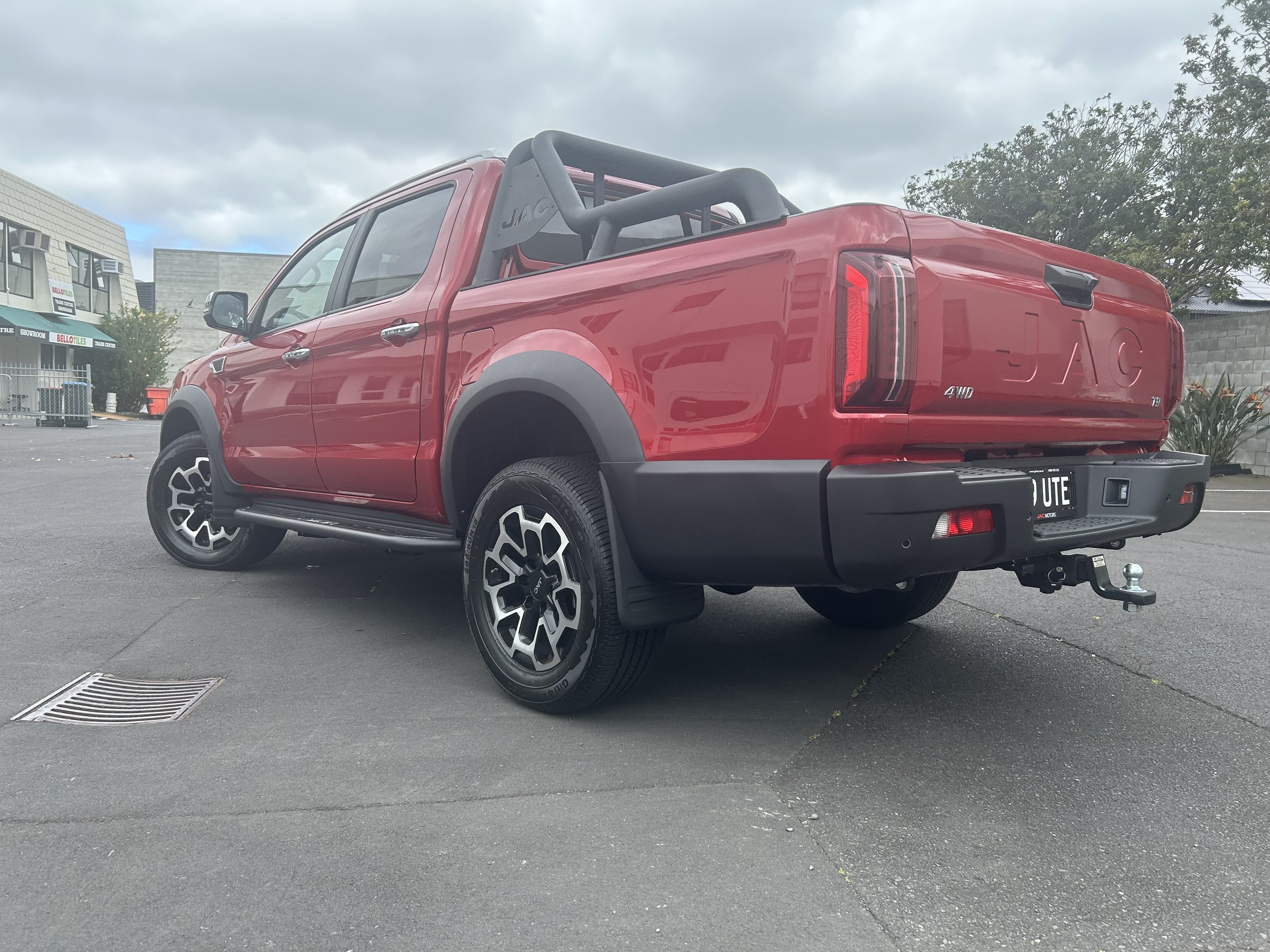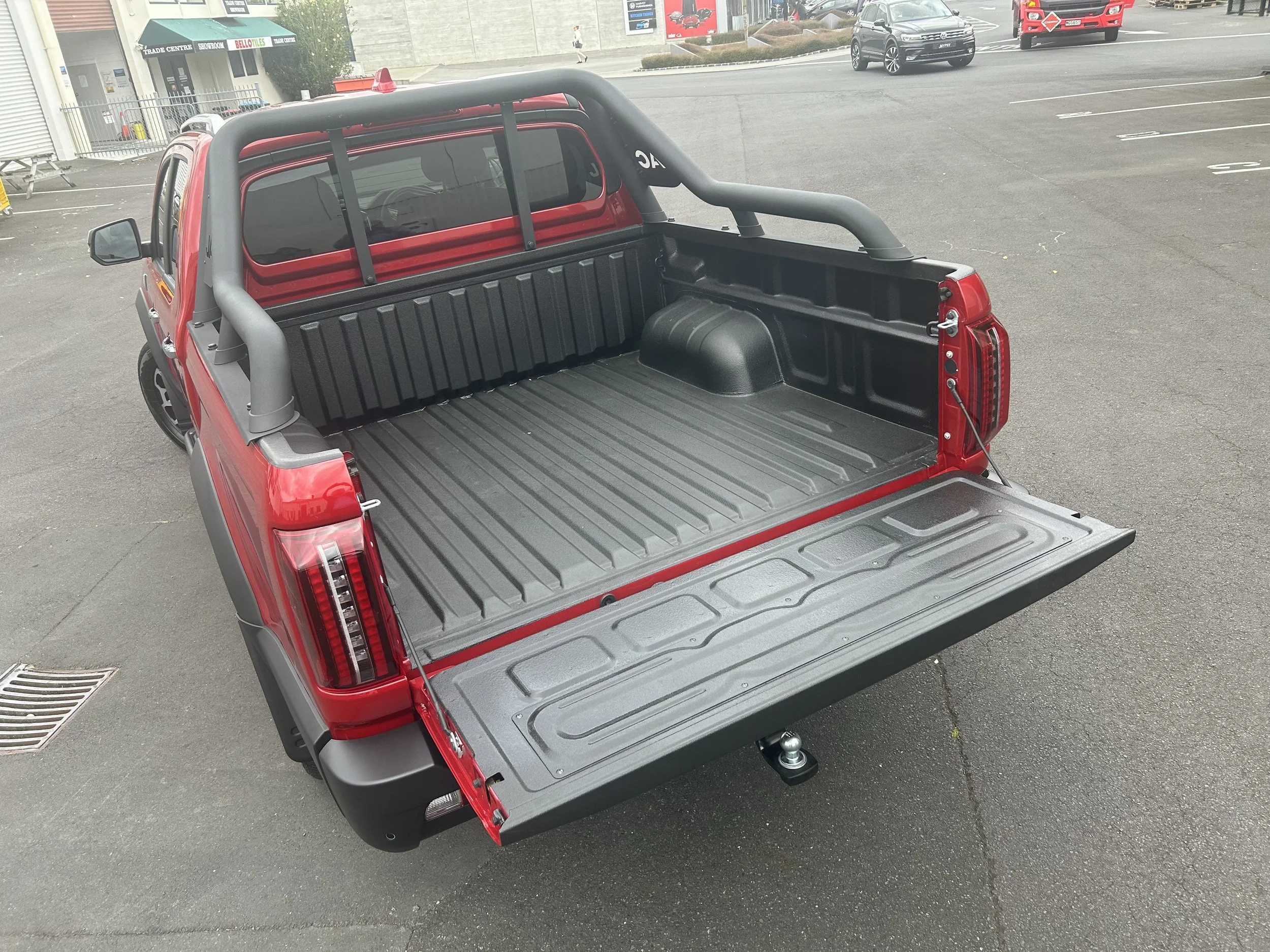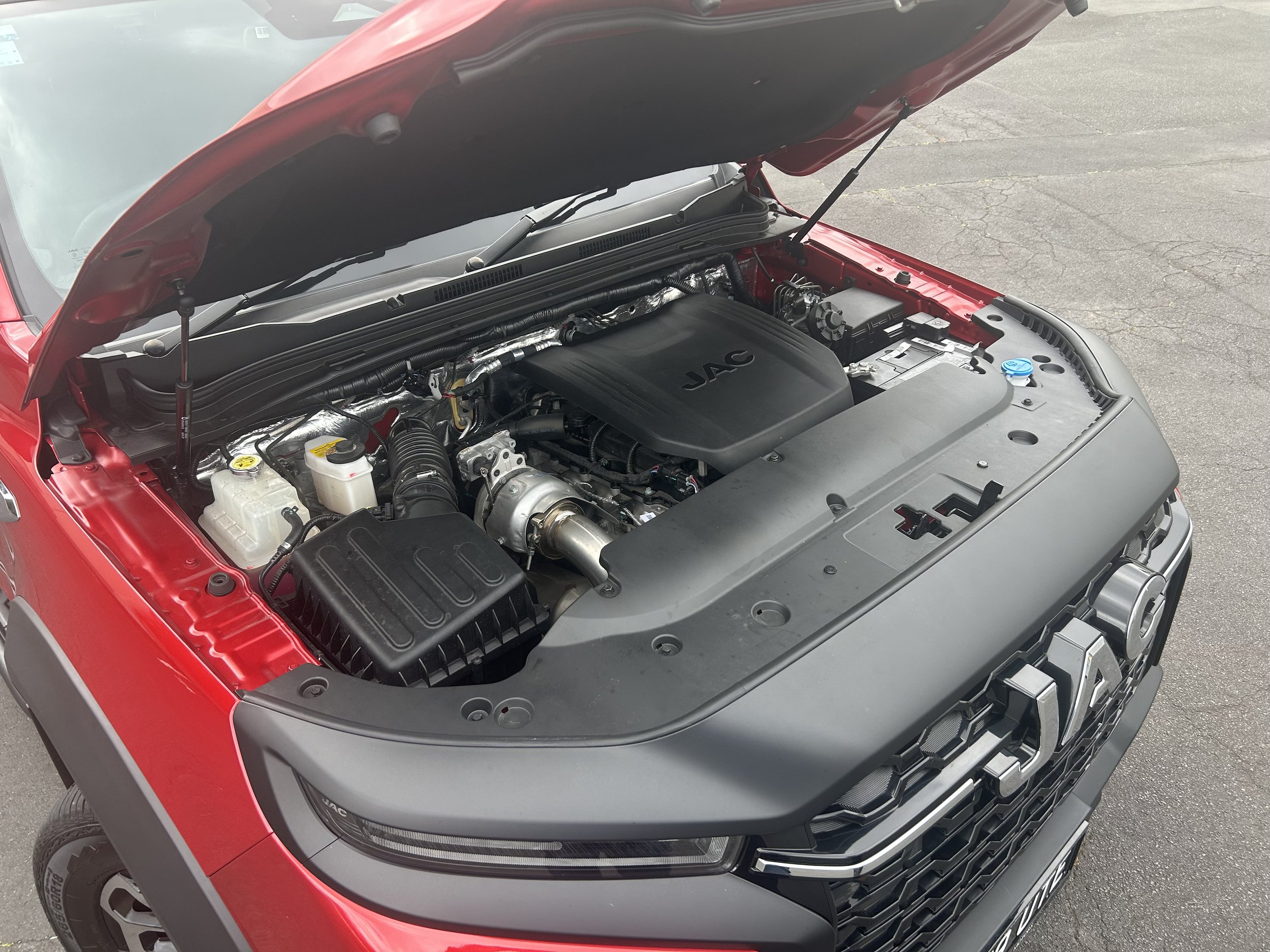JAC T9 going big, treading cautiously
/An attractive sticker, a fulsome specification and a on-road substance - the latest ute from China will be noticed. But it’s not out to fight all one-tonne involvers.
KEEPING it simple, quietly building up presence and taking care to avoid picking a fight with the guns.
That’s the strategy NZ Automotive Limited will employ within one-tonne ute-dom with the JAC T9, here in January in a single double cab one tonne 2.0-litre turbodiesel automatic format.
JAC (pronounced ‘Jack’) Motors is one of the top commercial vehicle brands in China, better known here for its light and medium full-out commercial trucks, but now branching into utes, the T9 being the second after the initial T6 of 2015.
It has established partnerships with Volkswagen Group, Cummins and Huawei and New Zealand appears to be its 121st export market.
That international aspiration and the usual Chinese brand desire to go in hard and fast would seem to be well-supported by the single, high-specification edition launching with a highly bullish (given its size and fulsome specification) $49,990 tag.
Yet even though it is confident this sticker will ruffle up the scene, JAC Automotive NZ won’t be striving to be an outright disrupter in the double cab sector, a sweet spot accounting for 65 percent of ute volume, general manager Andrew Craw assured at a product preview today.
In respect to that, while the GWM Cannon, LDV T60, Nissan Navara, Isuzu D-Max and perhaps some versions of the Mitsubishi Triton are considered fair game, competing with the sector’s best isn’t part of the game plan.
Why JAC will avoid trading blows with the Toyota Hilux and Ford Ranger that respectively hold second and first spot for national sales and easily outsell almost all the rest in any month comes down to several reasons.
In part it’s because the top guns are so powerfully entrenched; in part because they’re selling to a different level of customer, Craw explains.
As much as the T9 dresses for weekend warrior attention, it is primarily being pushed to the worksite scene, with trades folk being targeted.
Hence the ‘JAC of trades’ marketing slogan and Craw’s insistence “it’s a workhorse, not a show pony.”
Craw isn’t suggested Hilux and Ranger cannot also put in a honest day’s toil, but he says those products are nonetheless doing things differently.
“They’re in what we call the high end of the market; we’re not focussed on that end of the market.
“Where we are is what we call the second tier ute market … so D Max, Navara, the GWM and LDV … that’s the market we're focused on.”
There’s another good reason for not directly stirring up any trouble for Ranger.
NZ Automotive is a subsidiary of the Colonial Motor Company, which held rights selling Fords from the early 1900s until 1936, when Detroit took over, establishing Ford NZ.
Colonial predominantly has a Ford dealerships though it also has high profile with Mazda.
Nine of the 11 JAC dealerships, six in the North Island and the remainder south of Cook Strait, are NZ Automotive sites, and more arrangements are being made.
JAC will likely feature at some Mazda outlets - a windfall, perhaps, as they have been left ute-less by the decision earlier this year to pull BT-50 from sale here.
But it definitely won’t be at Ford-aligned premises, Craw confirms. Selling the T9 off the same sites that support the category-dominant Ranger would be too political.
“We recognise that one of our other brands is very important to the parent company. So we're not competing, we're not out there to compete with that top tier of the ute market.”
Aspiration with T9 in its first year is simply to create a solid foothold. There is no volume target locally or from JAC headquarters in Anhui Province, the region of China most heavily involved in making vehicles.
“I mean, we think having this model in this format fits the NZ market very nicely. But we are doing things slowly, we grow for profit, not for volume.”
With no pressure? “Not at all. No. They understand our philosophy and they're happy with our philosophy.
“We had the chairman of the group out here again two weeks ago, and they're very happy with our progress in terms of what we're doing.”
The tempered approach will also flavour how JAC premises present. Don’t expect to see big, glam bespoke showrooms.
“There's no expectations from either JAC or from NZ Automotive on that. It’s possible some sellers will set aside a specific area within a building; it’s just as likely there’s simply no showroom.
“Maybe it's just in a yard,” Craw explains. “To spend hundreds of thousands of dollars on big flash facias and the like … that's not profitable for anyone.
“It's just a matter of just doing it nice and slow, fitting in where we need to and establishing the brand first and foremost because that’s the most important thing for us.”
The T9 is powered by a 2.0-litre turbodiesel four-cylinder engine and eight-speed automatic gearbox.
Peak outputs are 125kW and 410Nm, running through a part-time four-wheel-drive system with a low-range transfer case and locking rear differential. There are Eco, Sport and Snow driving modes.
Fuel economy on the official WLTP average cycle is listed at 7.6 litres per 100 kilometres, which beats the class champion Ranger 2.0-litre and the Hilux hybrid. Cited CO2 emissions of 203 grams per kilometre are also highly competitive.
T9 has a 1000kg payload, along with a 3000kg braked towing capacity - so, 500kg short of the class best. It uses leaf springs and disc brakes at the rear, along with strut-based independent front suspension with coil springs.
As much as JAC doesn’t want to battle the giants, comparison might prove unavoidable given the similarity in size.
In terms of dimensions, the T9 is longer, taller and wider than a Hilux, but not as long as a Ranger. The 3110mm wheelbase also sits between the Hilux and Ranger. As with the Ford (and VW Amarok) the deck is designed to take a full-sized pallet.
JAC’s in partnership with Volkswagen in China - the Germans own a 50 percent share - and that arrangement has opened the door to T9 taking some top components from well-considered components suppliers.
Electronics are from Bosch, the transmission from ZF, the turbo from Garrett, the transfer box from Borg Warner and the diff lock from Eaton.
The model is also packed with driver assist and safety gear - it has 18 ADAS features and 27 safety-related systems - that appear to hold it in good stead.
It recently achieved a solid five star crash test result from independent assessor ANCAP, which is also New Zealand’s national crash test auditor for most new vehicles.
Notwithstanding, a reason for extensive pre-release trials of the model for most of this year allowed JAC NZ to provide feedback on how some systems might be better tuned for NZ conditions.
Overly-reactive ADAS is a common complaint about Chinese models; the NZ-spec T9’s was retuned as result of feedback and Craw says other software enhancements to the traffic sign recognition and traffic speed assist will implement before it comes on sale.
The T9 could conceivably have been cheaper had it delivered in the entry Oasis specification that is going into Australia alongside the high-end Haven format JAC New Zealand has gone for.
However, Craw says the differences between the two are so minor - the base car lacking just the Haven’s 360 degree camera and rockslide sports steps - it didn’t seem worth having.
As is, T9 takes a 10.4-inch infotainment display, a hot/cool box in the console the brand jokes is a perfect pie warmer, bi-LED lighting, single-zone climate control, 18-inch alloy wheels, a black sports bar, a rubber coated deck, a 220 volt power point in the back, faux leather seats - the fronts being heated and power adjustable - and wireless phone charging, though the Apple CarPlay and Android Auto require tethered USB connection. It has a five year 200,000 kilometre warranty.
JAC locations already announced are in Manukau, Pukekohe, New Plymouth, Masterton, Lower Hutt, Kapiti, Christchurch, Timaru, Dunedin, Queenstown and Invercargill.























